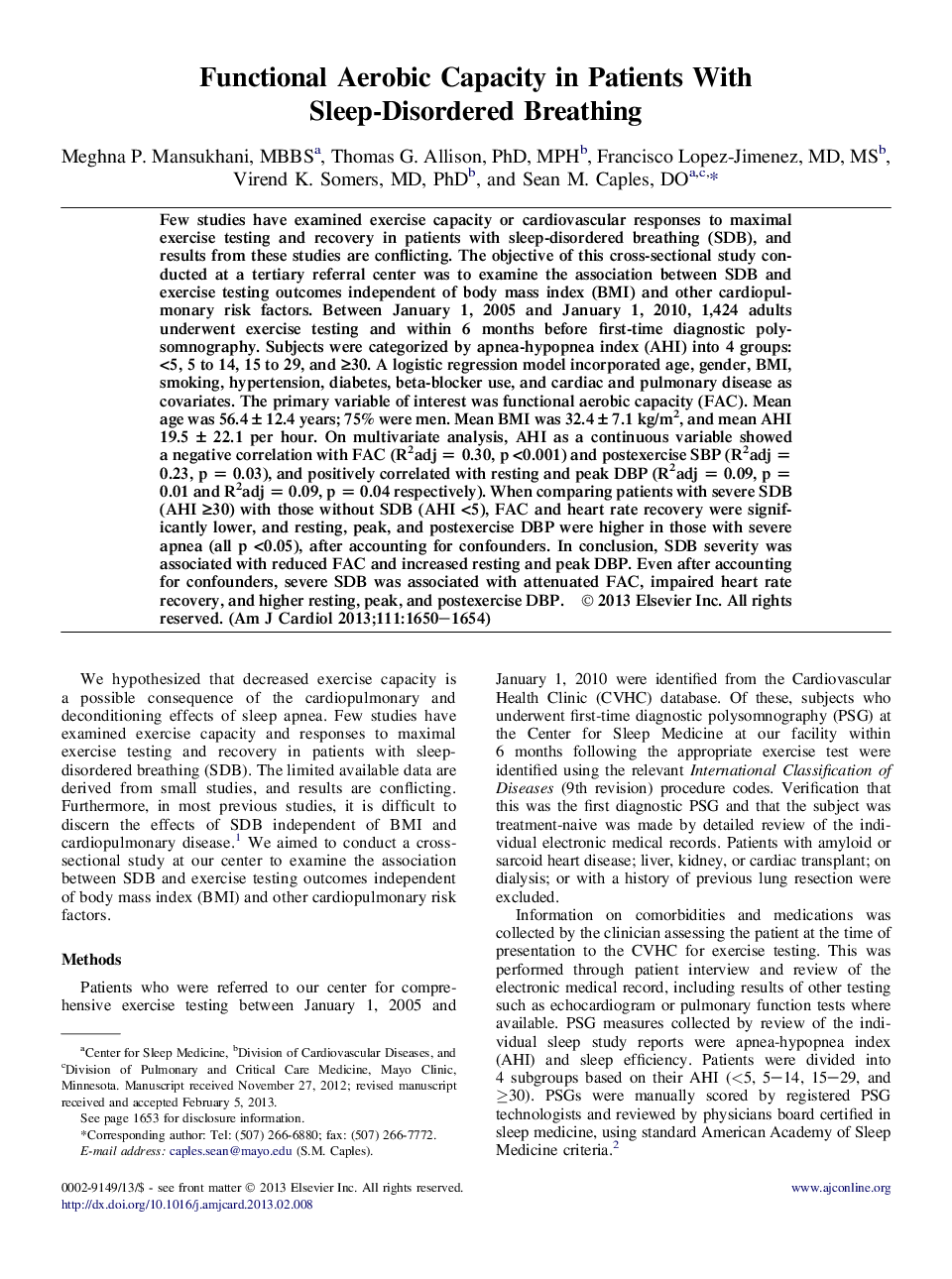| کد مقاله | کد نشریه | سال انتشار | مقاله انگلیسی | نسخه تمام متن |
|---|---|---|---|---|
| 5930907 | 1572190 | 2013 | 5 صفحه PDF | دانلود رایگان |
Few studies have examined exercise capacity or cardiovascular responses to maximal exercise testing and recovery in patients with sleep-disordered breathing (SDB), and results from these studies are conflicting. The objective of this cross-sectional study conducted at a tertiary referral center was to examine the association between SDB and exercise testing outcomes independent of body mass index (BMI) and other cardiopulmonary risk factors. Between January 1, 2005 and January 1, 2010, 1,424 adults underwent exercise testing and within 6 months before first-time diagnostic polysomnography. Subjects were categorized by apnea-hypopnea index (AHI) into 4 groups: <5, 5 to 14, 15 to 29, and â¥30. A logistic regression model incorporated age, gender, BMI, smoking, hypertension, diabetes, beta-blocker use, and cardiac and pulmonary disease as covariates. The primary variable of interest was functional aerobic capacity (FAC). Mean age was 56.4 ± 12.4 years; 75% were men. Mean BMI was 32.4 ± 7.1 kg/m², and mean AHI 19.5 ± 22.1 per hour. On multivariate analysis, AHI as a continuous variable showed a negative correlation with FAC (R²adj = 0.30, p <0.001) and postexercise SBP (R²adj = 0.23, p = 0.03), and positively correlated with resting and peak DBP (R²adj = 0.09, p = 0.01 and R²adj = 0.09, p = 0.04 respectively). When comparing patients with severe SDB (AHI â¥30) with those without SDB (AHI <5), FAC and heart rate recovery were significantly lower, and resting, peak, and postexercise DBP were higher in those with severe apnea (all p <0.05), after accounting for confounders. In conclusion, SDB severity was associated with reduced FAC and increased resting and peak DBP. Even after accounting for confounders, severe SDB was associated with attenuated FAC, impaired heart rate recovery, and higher resting, peak, and postexercise DBP.
Journal: The American Journal of Cardiology - Volume 111, Issue 11, 1 June 2013, Pages 1650-1654
